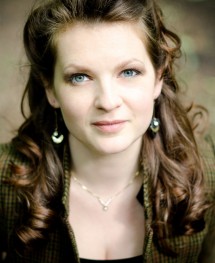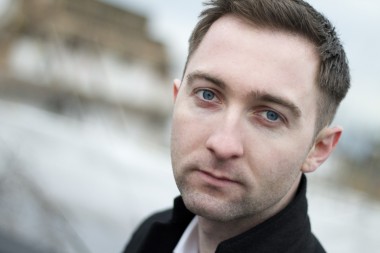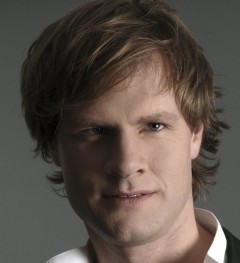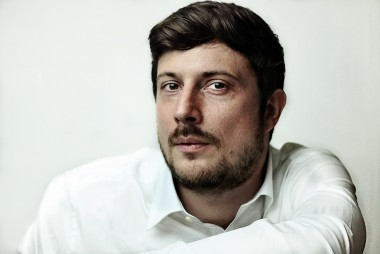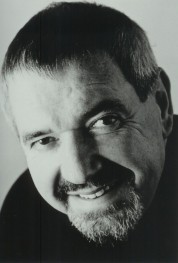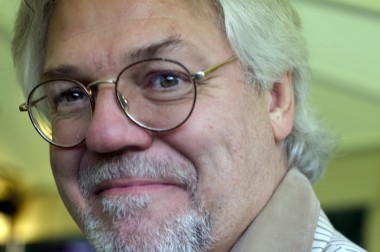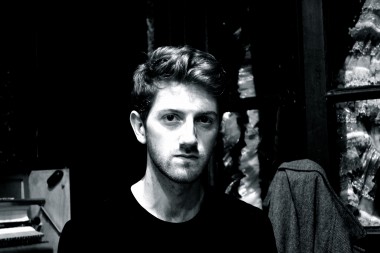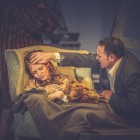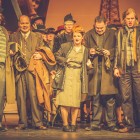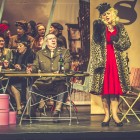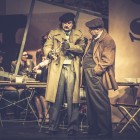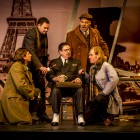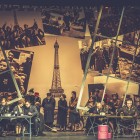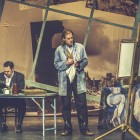La Boheme
Theatre Severn
4th May 2016
Opera fans and first timers piled into Theatre Severn tonight to share in the welcome return of The Swansea City Opera and their adaptation of Puccini’s La Boheme.
Originally the Opera was set in early nineteenth century Paris. Artistic Director, Brendan Wheatley brought it a little nearer in time and set it in nineteen forty-five Paris.
The war was over the Germans had been defeated. Winston and De Gaulle has walked as brothers down the Champs Elysees. France was itself consumed with revenge on the collaborators and trying to recover. The picture to the rest of the world was one of victory. However the poor as after every war, win or not, were hungry and they were cold. Wheatley brilliantly spotted the parities and showed us that in 100 years of man’s civilisation not much had changed for the poor.
The show opened with a delightful scene as we meet our four Bohemian room-mates. Poet Rodolfo, Marcello a painter, Schanaurd a Musician and Philosopher, Colline. All tortured souls just as every Artist needs to be.
Tracing the love lives of Rodolfo as he is captured in the beauty of Mimi an impoverished Seamstress; and social climber Musetta, a female singer. We see as she plays her rich American army officer husband Alcindoro, against starving painter Marcello. Needless to say tangled webs are weaved in a story of deception, love and tragedy.
Initially there was great levity and an hilarious moment when the three friends had all agreed to being broke and cold burned the first act of Randolfo’s play to keep warm. But in comes Schanaurd laden with cash and food as he has earned some money playing in the town for a rich man’s parrot. The job was to last until the parrot died. Sadly it was a short but fruitful engagement.
Putting the narrative to one side we turn our attention to design. Mr. Wheatley has been busy not only was he Artistic Director but the set was his design too. It is that design that is so crucial.
Sometimes when watching an opera unfold, whilst it can be a wonderful experience the storyline may get lost. Why? There are many reasons, clarity of vocal, balance against the orchestra and the overall design. But in truth Opera is a restrictive discipline; everything needs to be presented in song. Consequently semiotics or signs are an important part of the show and it is the designer’s job to reflect those signs and gestures to help. Where an actor may normally use a dialogue to move forward an opera singer may not.
So the question presents itself, how does one receive the information to make the event work: It is down to costume, movement, body gestures and crucially, design.
Swansea City Opera are so strong in this department offering up wonderfully simplistic sets, stylised but totally readable. The set for La Boheme is back-dropped by a montage of photographs of 1945 post war Paris. The montage fills the entire upstage wall. In front of this are two large stylised window frames and the stage was bare except for a few pieces of furniture. It was then that one sees the importance of design and semiotics.
The CVs of the cast make such impressive reading and all those years of experience are clear to see as Altos, Tenors and Soprano voices soar and dance with the wonderful music provided from the pit by the excellent Swansea City Opera Orchestra under the masterly swishes of John Beswick’s conductor’s baton..
It is always such a difficult job to name names. To pick out the ones for special mention. When the whole cast is golden it’s difficult to judge who glistens most. That said the beauty, the strength and the power of Rebecca Goulden’s Mimi, was something that one won’t forget in a hurry. If a singer can bring tears of emotion to the eye of this steely reviewer she must be doing something right.
Likewise Martin Quinn gets a special mention for his wonderfully comic portrayal of the French Waiter. He was a jewel. For the whole of scene one , act two, he was the busiest man on the stage. He didn’t upstage anybody as this is a team piece and all sides are equal, but he enhanced the scene no end with his hilarious characterisation. Highly entertaining.
The work of the Swansea City Opera is crucial. They are presenting Opera in an accessible and fun way. They can deliver humour as cleverly as they deliver pathos.
Noticeably they are seeing all generations in their audiences and the fact is, they have a talent for demystifying Opera and presentering it back to all the people regardless of class, age or creed they put Opera out there: And that is exactly where it should be. Long may they continue.
This is a four star review.
Owen J.Lewis
Wed, 04/05/2016 – 23:14
La BohèmeSwansea City Opera at the Harrogate Theatre, March 23
Opera Magazine June 2016 edition. Review by Martin Dreyer
Since shedding its Opera Box chrysalis in 2004, Swansea City Opera has flown many a mile. Its three-month tour of La Bohème, for example, included 25 one-night stands, in venues ranging from Barnstaple to Margate, and Pwllheli to Pitlochry, all relatively small towns and fewer than a third of them in Wales. So much for statistics. The company keeps costs to a minimum by using local singers as chorus; in Harrogate this involved six members of the Yorkshire-based group Cadenza. The orchestra, too, is much reduced, typically single wind and brass based around a string quintet and keyboard.
Brendan Wheatley’s production moved the action from 1830 to the immediate post-World War II period, while American troops were still around. So the permanent backdrop was a collage of Parisian images featuring troops and locals in celebratory mood. This worked well for the first half, less so at the customs gate or at Mimì’s death, where the irony became oppressive. Gabriella Ingram’s costumes were vintage 1940s, though Schaunard’s three-piece suit and Rodolfo’s slightly too natty jacket suggested bohemians rather above the poverty line. Most of the cuts came in Act 2, where Parpignol and the children were absent, and the abridged parade was indicated only by the singers waving into the auditorium. The act ended so abruptly that Alcindoro, a distraught American officer, had no chance to query his bill. Puccini’s colour-contrasts were thereby lessened but this barely affected the success of the evening on its own terms.
Rebecca Goulden was an engaging Mimì, her soprano moving smoothly from coy ingénue to tender-hearted lover, with excellent control at the top. She is a protégée of Mary Plazas and very much in her mould. Her charismatic Rodolfo was Shaun Dixon, whose flexible but often boisterous tenor needed more lyricism; a beautifully floated cadence near the end of Act 3 marked a rare variation in his tone. Angharad Morgan was a confident, preening Musetta, despite the handicap of an unruly blonde wig. Håkan Vramsmo brought a warm baritone to Marcello, and Mark Saberton made a fiery Schaunard, while Marcin Gesla’s bass sound suited Colline but needed sharper diction. The versatile Paul Hudson doubled as Benoît and Alcindoro; Martin Quinn injected some camp foolery as a waiter. John Beswick kept his small band on its toes, supporting his singers sympathetically. The Ruth and Thomas Martin translation was tarted up with some choice swear words, but not offensively. Whether Wheatley’s updated scenario was more ‘relevant’—his word—to a younger audience is debatable; dumbing down is always the danger. Here, however, even with these relatively well-heeled bohemians, it worked. What remained undeniable was the value of these nationwide excursions. Pound for pound, government support will always have a greater impact on small companies like SCO than on besieged choruses in big cities. We need them both.
South Wales Evening Post
Sunday May 17th by Mark Rees
THEY might not have the budget of a national company, but that didn’t stop Swansea City Opera putting on a high quality production that gets to the heart of a good opera — a solid live orchestra, a strong leading cast, and a touch of inventiveness when it comes to the staging. An intimate performance sung in English, the Puccini favourite was dragged into the 20th Century to 1940s post-war France, a change of scenery which worked remarkably well. With poverty still rife in the period, the challenges faced by the bohemians at the heart of the tale remained the same as they tried to make the best of their circumstances as penniless creatives in search of food, warmth and love. Some elements were trimmed to keep things manageable, the most noticeable omission being old favourite Parpignol the toy seller, which in no way detracted from a performance which captured — in the first half, at least — the sense of fun intrinsic to the gang of friends, making the looming tragedy that much more poignant .
